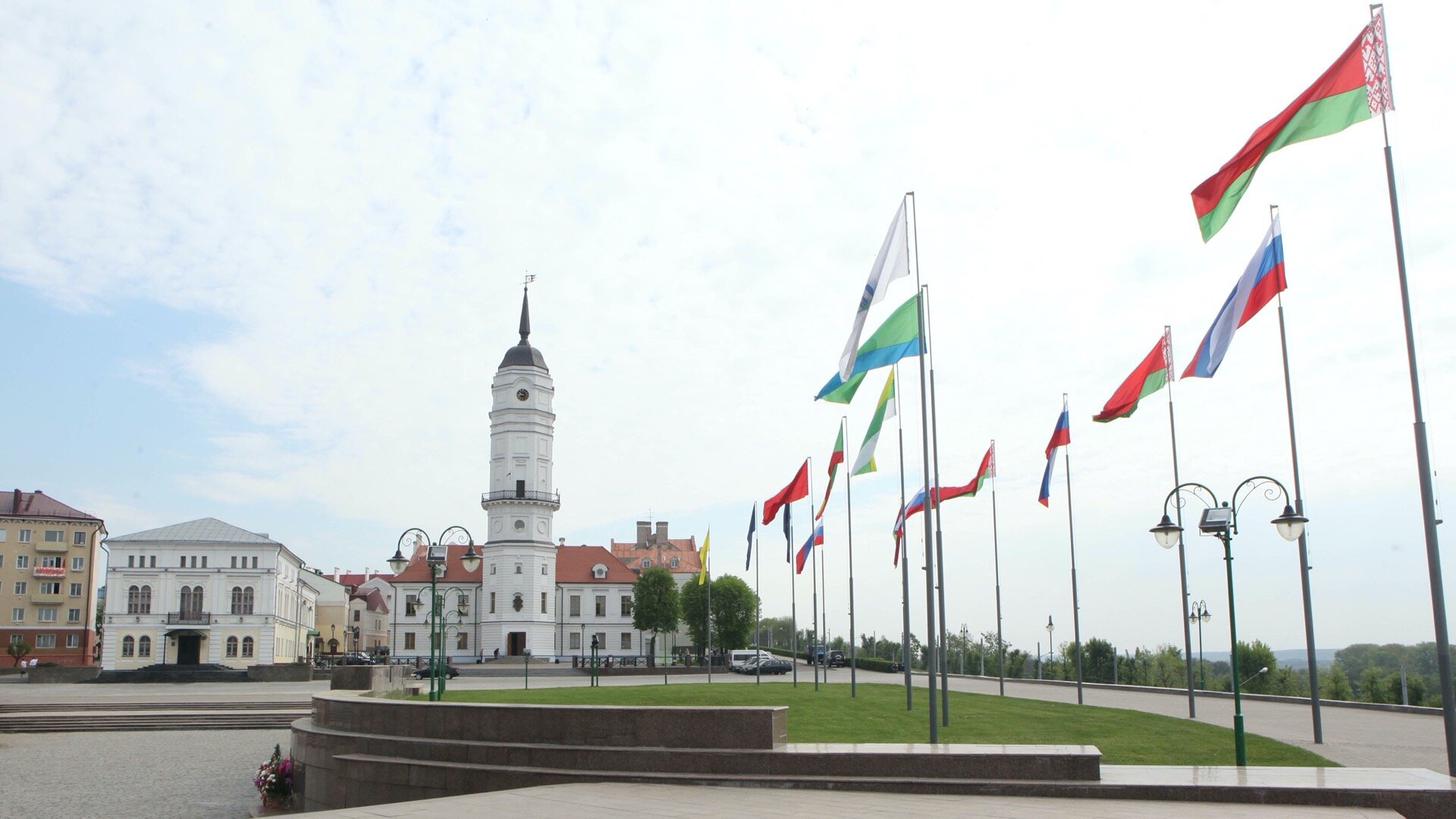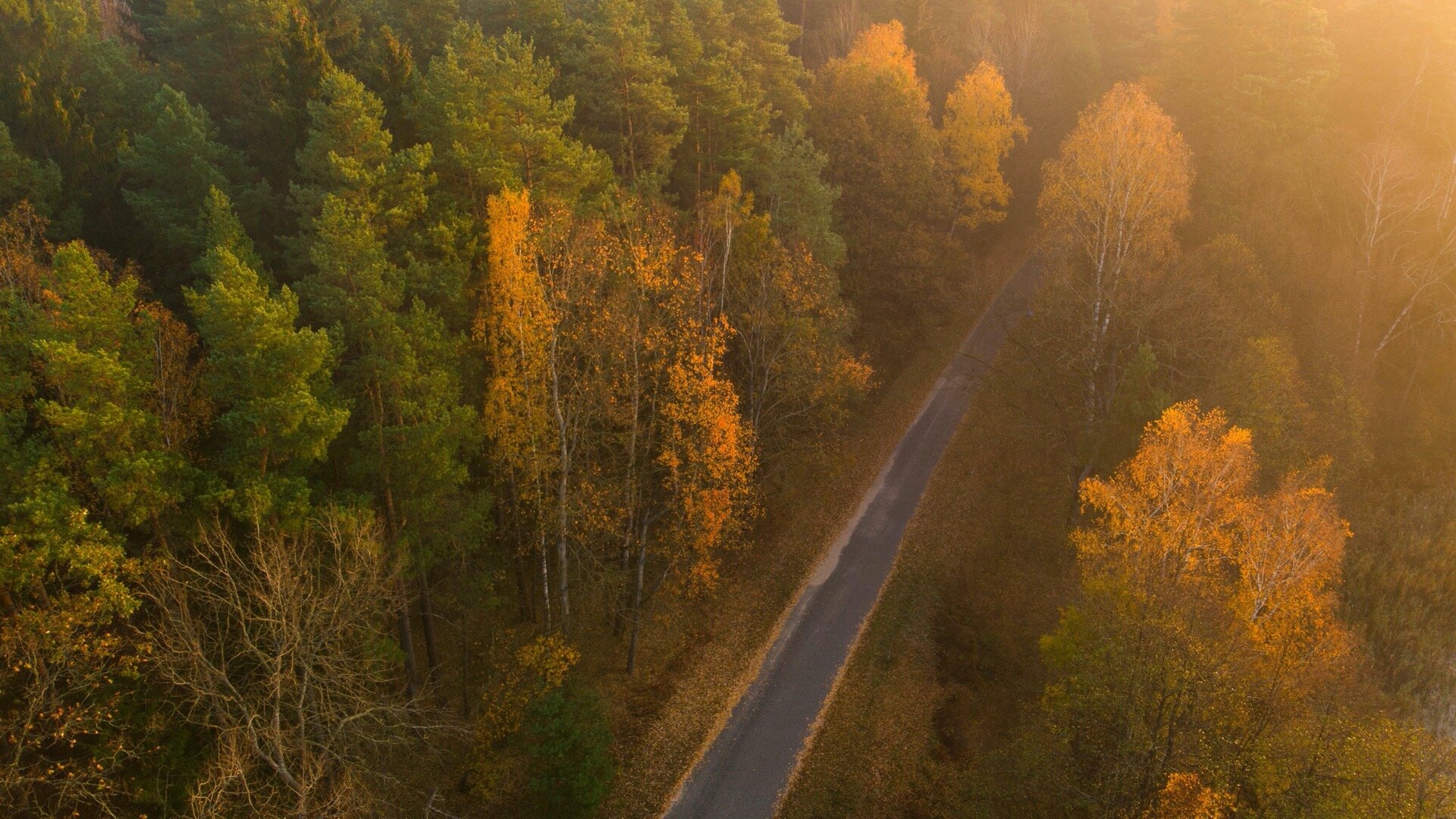Mogilev Oblast
History, interesting facts

Mogilev Oblast is a rapidly developing region of Belarus with a rich and unique history.
The first people (the Neanderthals, Homo neanderthalensis) started settling the region’s territory in the Middle Paleolithic (100,000-40,000 years ago). The evidence of their economic activity was found near the village of Obidovichi of Bykhov District. Later, in the Upper Paleolithic period (40,000-14,000 years ago) the territory was populated by Cro-Magnons, the ancestors of a modern man Homo sapiens.
In the 8-9th centuries, the territory of Mogilev Oblast was inhabited by the Slavic tribes of Dregovichi, Radimichi and Krivichi, who founded the first towns and laid the foundations of statehood.
The oldest towns and cities of Mogilev Oblast are Mstislavl (founded in 1135), Propoisk (now Slavgorod) and Krichev - both known since 1136.
According to the Mogilev chronicle, Mogilev was founded in 1267, when a castle was laid out at the bend of the Dnieper.
The first half of the 16th century saw Mogilev as the largest city in the Belarusian Dnieper area. It turned into one of the largest commercial and manufacturing centers in Belarus by the beginning of the 17th century and in the entire Grand Duchy of Lithuania by the middle of the century.
In 1772, Mogilev was incorporated into the Russian Empire following the first partition of the Polish-Lithuanian Commonwealth (Rzeczpospolita).
Throughout its history Mogilev lands have repeatedly been a battle scene, including during the Livonian war, the Northern war, the war against Napoleon in 1812, the First World war, and the Great Patriotic war.
Part of the territory of Mogilev Oblast (mainly in the south) was exposed to significant radiation fallout after the Chernobyl accident in 1986. However, thanks to the consistent rehabilitation efforts Mogilev Oblast is a well-developed and attractive region today.
Geography

Mogilev Oblast is situated in the east of the country. It is adjacent to Smolensk Oblast and Bryansk Oblast of Russia.
The easternmost point of Belarus is located in the region, near the town of Khotimsk. Its coordinates are 53°24'N and 32°47'E.
The territory of Mogilev Oblast covers an area of 29,100 km2.
The terrain of the region is mostly flat.
Administrative and territorial division
- 21 districts (Belynichi, Bobruisk, Bykhov, Glusk, Gorki, Dribin, Kirovsk, Klimovichi, Klichev, Kostyukovichi, Krasnopolye, Krichev, Krugloye, Mogilev, Mstislavl, Osipovichi, Slavgorod, Khotimsk, Chausy, Cherikov, Shklov), 2 districts in Mogilev, and 2 districts in Bobruisk;
- 17 cities, including 2 cities of oblast subordination - Mogilev and Bobruisk;
- 15 towns of district subordination;
- 6 urban-type settlements;
- 2,960 rural settlements, including 204 agrotowns.
There are 152 rural councils in Mogilev Oblast.
Population
As of 1 January 2025, the population of Mogilev Oblast was 971,365, including 789,718 urban residents and 181,647 rural residents.
Major cities are Mogilev (352,896), Bobruisk (205,502), Osipovichi (28,745), Gorki (28,626), Krichev (22,973).
The biggest agrotowns are Buinichi (4,309), Polykovichi (3,000).
Economy

Mogilev Oblast is one of the main industrial areas of Belarus. It is the CIS a leader in terms of the production of wheel tractor-scrapers and underground road trains, trailed agricultural vehicles and passenger elevators.
Mogilev Oblast is the country's main producer of automobile tires, elevators, cement, chemical fibers and fabrics. The leading industries of the region are production of food and beverages, rubber and plastic products, building materials, machinery and equipment as well as woodworking.
Mogilev Oblast is home to over 1,600 industrial companies. The largest of them are Belshina, Mogilevkhimvolokno, Belarusian Cement Plant, Krichevtsementnoshifer, Mogilevliftmash, Mogotex, Mogilev Metallurgical Works, Bobruisk Plant of Tractor Parts and Units, the Management Company of the Bobruiskagromash Holding Company, Mogilev Car Building Plant, Shklov Newsprint Mill, Mogilev Dairy Company Babushkina Krynka, Mogilev Meat Packing Plant, Molochnye Gorki.
Agriculture is the most important sector of the regional economy. Over the past years the region has consistently gathered good harvests: the annual grain yield is over one million tonnes. Crop production is dominated by cereals (mainly wheat, triticale, barley, and rye), potatoes and forage crops. Flax production is at a high level.
Some farms specialize in fish production.
The agricultural industry includes 189 agricultural companies. The major ones are Servolux Agro, Alexandriyskoe, Rodina agricultural company in Belynichi, Dobrovolets collective farm, Zarya Agrokombinat, Rassvet agricultural company in Kirovsk District.
Mogilev Oblast maintains foreign trade relations with 104 countries of the world. Major trading partners are the Russian Federation, China, Poland, Kazakhstan, Turkiye, Germany, Uzbekistan, Azerbaijan, the Netherlands.
The free economic zone Mogilev was established in 2002.
Natural and mineral resources

Nature has endowed Mogilev Oblast with picturesque places.
Some 453 rivers flow through the region, including the Dnieper, the Berezina, the Sozh, the Svisloch, the Ptich, the Drut, the Oster, the Besed and the Iput.
Most of the lakes are of glacial origin and have crystal clear water. There are 120 lakes in Mogilev Oblast. The largest of them are Zaozerskoye, Chernoye, Lochinskoye, Vyakhovo, and Bely Bereg.
There are five wildlife reserves of national significance and 60 hydrological, biological and landscape reserves of local significance. The region boasts 91 natural monuments, many of which are popular not only with Belarusians, but also with foreign visitors. These are, for example, Trofimov's Spring near the agrotown of Alexandria, Polykovichskaya Spring near Mogilev, Zhilichi Park in Kirovsk District and an arboretum in Gorki.
The region is renowned for its hunting resources. Forest lands occupy 41% of the territory of Mogilev Oblast.
The region is rich in mineral resources. Currently there are 1,800 known deposits: cement raw materials (the country's largest reserves of chalk, marl, clay and cement-loam), phosphorites (unique deposits for Belarus), sand and gravel mixes, building and silicate sands, peat, sapropel, mineral waters, tripoli and oil.
Sport and tourism
Forty-five sports are practiced in Mogilev Oblast.
Track and field athlete Mikhail Krivonosov won the first Olympic medal in the history of Belarusian sport in 1956 at the Melbourne Olympic Games (2nd in the hammer throw). At the Seoul Olympics in 1988 a gold medal was won by Viktor Reneisky (canoe sprint) and Svetlana Baitova (rhythmic gymnastics). Other Olympic champions hailing from Mogilev Oblast are Aleksandr Maseikov (canoe sprint, 1992), Andrei and Aliaksandr Bahdanovich (canoe sprint, 2008), Dzinara Alimbekava (biathlon, 2018).
Mogilev Oblast offers different types of tourism: cultural, sports, gastronomic, religious, hunting, industrial, recreational and agroecotourism.
The region has 61 hotels, 17 hunting and fishing lodge, 134 farm stays, 17 recreation centers.
Nine health resorts are located in Mogilev Oblast: Lenin Health Resort, Shinnik, Sosny, Svisloch, Dubrovenka, Raduga, Orlovsky health resort, Chaika, Energetik.
Culture and major sights

Mogilev Oblast has 24 museums, 3 theaters and a philharmonic hall.
The only remaining castle in the region is Bykhov Castle.
Mogilev Oblast has a rich cultural background. It was in Mogilev where the first drama theater on the Belarusian lands was set up in 1888. It was one of the best in Europe in terms of acoustics. Komissarzhevskaya, Chaliapin and Rachmaninoff performed there. Potemkin's Palace in Krichev that was built a century earlier still pleases the eye.
The city of Gorki is a home to Belarusian State Agricultural Academy, the oldest agricultural university in the CIS and Europe founded in 1840. Its integral architectural ensemble, which has been developing for more than 150 years, is of historical and cultural value. Aleksandr Lukashenko, President of Belarus is one of the graduates of this famous university that has a rich history and traditions.
Major sights of Mogilev Oblast also include St. Nicholas Monastery of the 17th century in Mogilev, the Jesuit Church with a monastery of the early 17th century in Mstislavl, the palace and park complex of the 18th century in the village of Zhilichi in Kirovsk District, the Bobruisk fortress of the 19th century and the Shklov Town Hall of the 18th century.
The Dnieper region of Belarus hosts a number of big events. These are the Kupala Night Festival Alexandria Gathers Friends, Bard Music & Fishing Festival in Bykhov District, the medieval festival in Mstislavl, the international children's art festival Golden Bee in Klimovichi, the folk art international festival Wreath of Friendship in Bobruisk, the Golden Hit International Music Festival in Mogilev and many others.
Mogilev residents not only carefully preserve the traditions and architectural monuments but also restore the lost ones. A striking symbol of this revival is the Mogilev Town Hall, built in 1698 and considered to be the best example of civil architecture in Belarus of the 18th century. In 1780, the Catherine II and the Austrian Emperor Franz Joseph II viewed the city from its observation deck. It was repeatedly ruined in fires and was repeatedly reconstructed. It was demolished by controlled explosion in 1957. In 2007, Aleksandr Lukashenko, President of Belarus attended a ceremony to launch the reconstruction of this unique building. The Head of State laid a capsule with a message to the descendants in the foundation of the reconstructed City Hall.
Another landmark of Mogilev Oblast is the memorial Buinichi Field dedicated to the heroic defenders of Mogilev in 1941.
Religion

In the Republic of Belarus, the freedom of faith and religion is an inalienable right of every citizen so the country's population practices a variety of religions. The most common religion is Christianity. The largest Christian communities in Mogilev Oblast are Orthodox, Catholic, and Protestant ones. Other religions include Judaism. All in all, there are 20 religious denominations in the region, with the total of 299 religious communities.